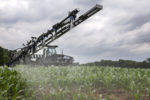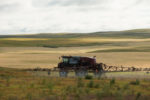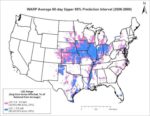Advertise Follow Us
Articles Tagged with ''EPA''
A Realistic Look at Refining EPA Pesticide Spray Drift Regulations
Syngenta’s Richard Brain & Dan Perkins of Ag Insight unpack their field spray drift study findings & explain how they came up with a more refined pesticide buffer.
Read More


.png?height=125&t=1731942302&width=150)







